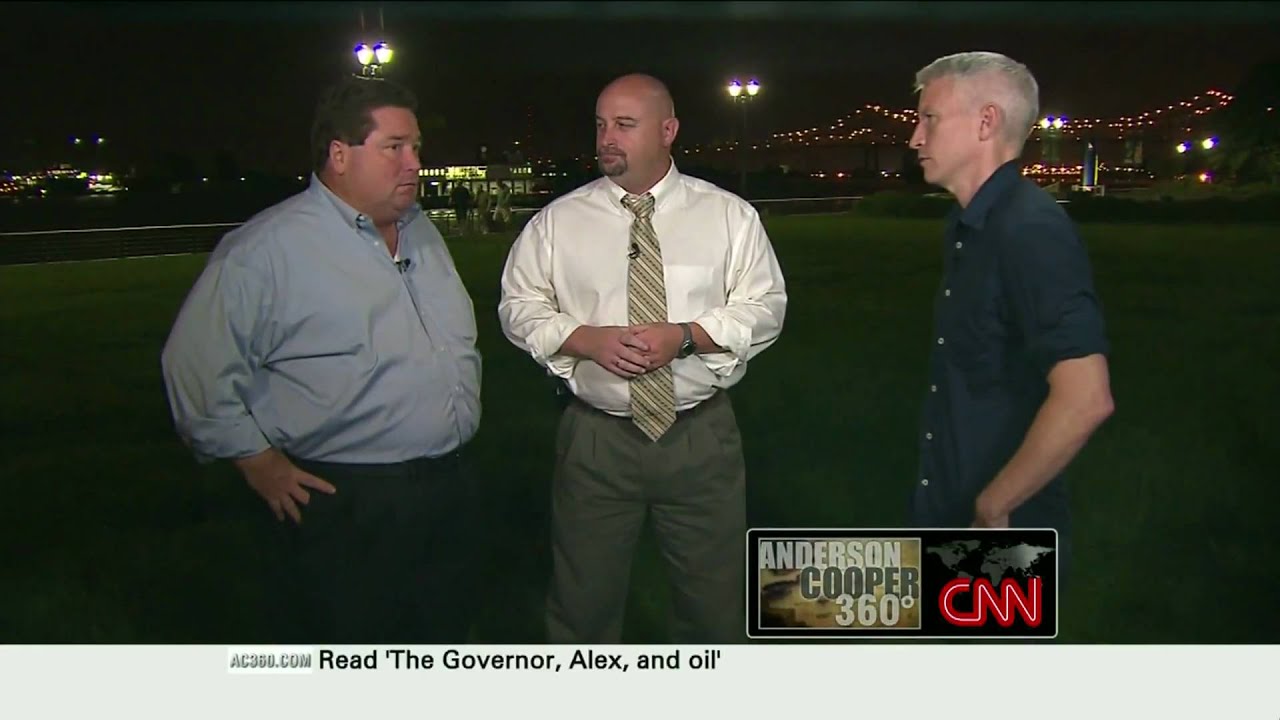Associated Press photographer Charlie Riedel’s up-close images of brown pelicans soaked in oil finally brought home the effects of the Gulf oil spill catastrophe last week. They showed scenes that photographers have had much difficulty documenting, not only because of the location of the spill, but because BP and government officials have worked to keep the spill’s consequences out of sight—and out of mind.
Category: Access & Censorship
-
The Oil Spill Story Finally Hits Home
-

New Rule Blocks Press From Covering Spill
Obama admin bans press from filming BP oil spill areas in the Gulf
CNN’s Anderson Cooper discusses how the Obama administration is limiting access by the media to areas affected by the BP Macondo well spill.
via YouTube: http://www.youtube.com/v/WpJBsjKhRTo&hl=en_US&fs=1?rel=0
A new rule went into effect last Thursday that bars journalists, reporters and photographers from getting within 65 feet of the oil-soaked beaches, wildlife and booms in the Louisiana Gulf.
-
Home Office reviews photography rights in anti-terror law rewrite – British Journal of Photography
A new camcorder from Sony lets movie-makers use SLR lenses to shoot pro-level footage for just $2,000. The NEX-VG10 uses the same APS-C sensor as the NEX mirrorless line-up, and also uses their E lens-mount, Sony’s equivalent of the compact micro-four-thirds format. With an adapter, you can also use any of Sony’s Alpha mount lenses.
-
Commentary: For reporters, the rules at Guantanamo change daily | McClatchy
Guantanamo’s Camp Justice is a place where you can sit at your laptop or by your phone only if there’s a member of the military within earshot.
It’s a place where you can go to court only in the custody of a military public affairs officer. Inside, if there’s only one escort — this happened recently — and somebody has to go to the bathroom, every reporter has to leave court, too.
It’s a place where a soldier stands over your shoulder, looks in your viewfinder and says ‘Don’t take that picture, I’ll delete it.’
-

Picturing War's Wounded and Dead – NYTimes.com
Picturing War’s Wounded and Dead
There is no telling how people will react to realistic images and written reports that show war for what it is. But such images do serve a purpose.
via At War Blog: http://atwar.blogs.nytimes.com/2010/09/21/picturing-wars-wounded-and-dead/
“For centuries pictures of the dead and wounded have been part and parcel of war communications. Often the intentions were clear, ranging from medical instruction to anti-war protests. The public’s response could coincide with or diverge from the publisher’s intention.”
Anyone who has survived or covered a conflict, and interacted with the people who have suffered grievously from war, would recognize the ringing truth in the third sentence of this statement, which opens the preface to an article in an issue this summer in the journal Medicine, Conflict and Survival.
-
Kuwait bans DSLR use by non-journalists | dvafoto
I currently live in Moscow. It’s a huge metropolis. Living here you get used to people, speed, vanity, the subway… Do you know that the subway is a whole individual city of people inside Moscow? And when you come to any village in the north of Russia, like Kenozero, you meet the silence. There, you meet amazing people, you are surrounded by the beauty of nature, and you just shoot the first picture and that’s it. You see to it that you will come back there again and again. You listen to these people, their stories, their dreams and you need nothing else. For me, it just happened that way.
-
Egyptian army cracks down on photographers [update] – British Journal of Photography
Ed Ou was an intern at The Times (“A Dozen Promising Photographers“) and is now a freelancer, represented by Reportage by Getty Images, shooting for The Times in Egypt. He has photographed in the Middle East, Africa and the former Soviet republics. James Estrin spoke with him by phone early Sunday morning and early Monday morning, Cairo time.
-

Tyler Hicks, Lynsey Addario, Two Other NY Times Journalists Missing In Libya
Four New York Times Journalists Are Missing in Libya
The Times said Wednesday that editors were last in contact with the missing journalists on Tuesday morning.
via Media Decoder Blog: http://mediadecoder.blogs.nytimes.com/2011/03/16/four-new-york-times-journalists-are-missing-in-libya/
The missing journalists are Anthony Shadid, the Beirut bureau chief and twice winner of the Pulitzer Prize for foreign reporting; Stephen Farrell, a reporter and videographer who was kidnapped by the Taliban in 2009 and rescued by British commandos; and two photographers, Tyler Hicks and Lynsey Addario, who have worked extensively in the Middle East and Africa.
-

Federal Courts Worry Your Smartphone Might Be a Bomb
Federal Courts Worry Your Smartphone Might Be a Bomb
Smartphones could offer journalists and the public an easy and cost-effective method to provide online updates of court proceedings — which is why it’s always been frustrating that many federal jurisdictions don’t allow the devices into courthouses. Now, thanks to a newly issued document, we know why. Terrorism. An 8-page memo issued last week by […]
via WIRED: https://www.wired.com/2011/03/court-smartphone/
Smartphones could offer journalists and the public an easy and cost-effective method to provide online updates of court proceedings — which is why it’s always been frustrating that many federal jurisdictions don’t allow the devices into courthouses. Now, thanks to a newly issued document, we know why.
Terrorism.
